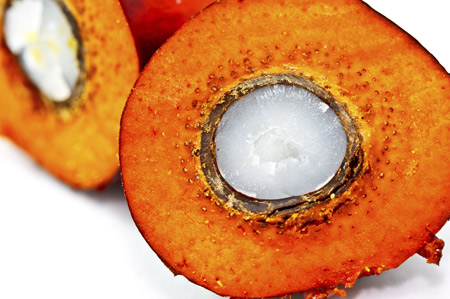 (Businessweek) – Palm oil advanced, sending futures into a bull market and capping the biggest weekly gain in almost three years, on speculation that rain may have reduced production in top suppliers Indonesia and Malaysia.
(Businessweek) – Palm oil advanced, sending futures into a bull market and capping the biggest weekly gain in almost three years, on speculation that rain may have reduced production in top suppliers Indonesia and Malaysia.
Futures rose 1.2 percent to 2,623 ringgit ($827) a metric ton on the Bursa Malaysia Derivatives, the highest close since September 2012. That’s 21 percent more than the 2,167 ringgit settlement on July 29, meeting the common definition of a bull market. Palm increased 7.3 percent this week, the most since 2010, and is heading for its first annual gain in three years.
Prices climbed on concern that output is less than analysts expected and that the start of the monsoon this month would further curb supply. While palm is produced year-round, output peaks from July to October. Several major plantations in Indonesia reported production unexpectedly fell 7 percent to 10 percent in the first 10 months because of rain and the growing cycle, said Derom Bangun, chairman of the palm oil board.
“It’s a combination of lower stocks and lower-than-expected production year-to-date from Indonesia,” Ivy Ng, an analyst at CIMB Investment Bank Bhd., said by phone from Kuala Lumpur. “The third quarter is the peak-production season and the fact that it’s not matching last year’s production has gotten people a bit excited.” Stockpiles are also lower, she said.
Discount Shrinks
Inventories in Malaysia were probably 1.83 million tons last month, Ng wrote in a report today, lowering her estimate by about 3 percent. That’s 27 percent less from a year earlier and the lowest level for October since 2010, according to data from the palm oil board. Prices rose 12 percent in October 2010 and extended gains by 24 percent through December that year.
The commodity tumbled into a bear market in June 2012 as production outpaced demand. Concern that rains are curbing output contrasts with estimates of increasing supply from the U.S. Department of Agriculture. World production will advance 5 percent to 58.1 million tons, boosting stockpiles by 17 percent to an all-time high of 9.2 million tons, the USDA estimates.
“The price improvement could be sustained, although the upside may be capped” as palm’s discount to soybean oil narrows, Ng said in the report.
The gap shrank to $91.58 a ton, the smallest since May 2012 and compared with $379 in October last year. The 14-day relative strength index for palm was 78.8. Some traders see readings above 70 as a sign a drop in prices is imminent.
Soybean oil for December delivery advanced 0.9 percent to 41.72 cents a pound on the Chicago Board of Trade, while soybeans for January were little changed at $12.665 a bushel.
Refined palm oil for May delivery gained 1.3 percent to end at 6,374 yuan ($1,045) a ton on the Dalian Commodity Exchange and soybean oil rose 1.2 percent to end at 7,302 yuan.




